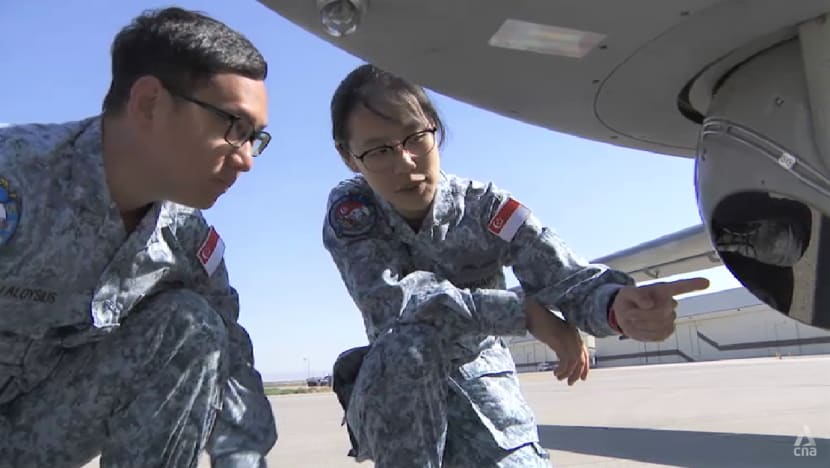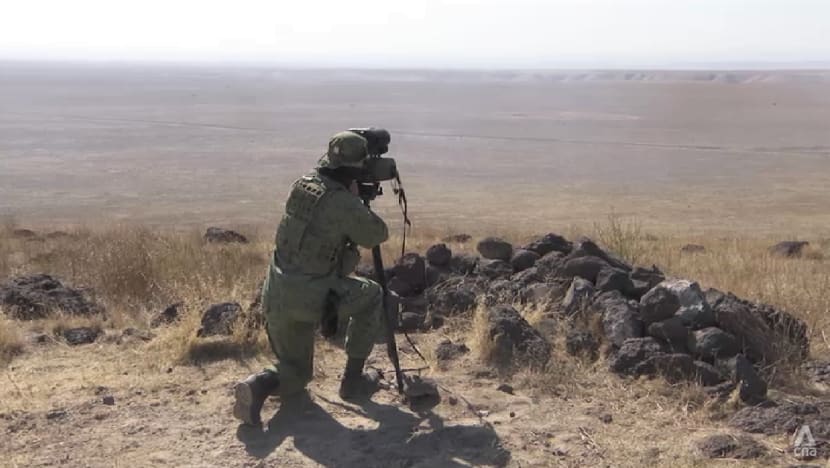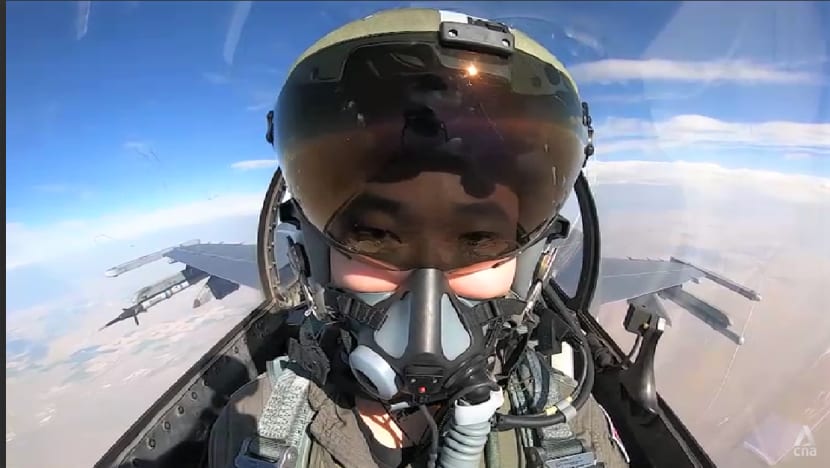SAF puts prized assets to the test at Exercise Forging Sabre in the US
This year’s exercise involves more than 1,000 personnel from Singapore.

For coordinated attacks, many assets play their part in the background, including unmanned aerial vehicles.
IDAHO: Troops on the ground first conduct lasing operations and pinpoint exactly where targets are, before assets from the Singapore Army and the Republic of Singapore Air Force (RSAF) - such as Apache helicopters and F-15 fighter jets - attack in a coordinated strike.
Coordination is key as the Singapore Armed Forces (SAF) puts its prized assets to the test during the ongoing Exercise Forging Sabre in the United States.
"We have done many drills, rehearsed multiple times on our respective SOPs (standard operating procedures),” said Captain Brandon Tan, Bravo battery commander from the 23rd Battalion Singapore Artillery.
“In this case, we could react to those scenarios. And displace, in a certain sense, in a more efficient manner.”
MAKING MORE INFORMED DECISIONS
The biennial drill is held at the Mountain Home Air Force Base in the US state of Idaho from September 11 to 30. It is also the first time the SAF’s fourth service, the Digital and Intelligence Service (DIS), is taking part.
For coordinated attacks, many assets play their part in the background, including unmanned aerial vehicles.
“We fly high as well as we fly far. So we can see a lot more than what people on the ground can see,” said Major Ooi Liwen, Heron 1 pilot from 119 Squadron.
“Therefore, we can also relay this information back to the command post so that the commanders can react and make more informed decisions.”

This year’s exercise involves more than 1,000 personnel from Singapore. It is the ninth edition in a series that started in 2005.
TESTING UPGRADED F-16 JETS, MID-AIR REFUELLING
At the biennial training, the RSAF is also testing out upgraded capabilities in an airspace more than 20 times the size of Singapore, from automatically refuelling jets mid-air to detecting enemies further away.
Besides training, keeping the jets in the air longer is also vital during rare emergencies when it is unsafe to land.
For the first time in the history of Exercise Forging Sabre, automatic air-to-air refuelling capabilities, which enable jets to refuel while in the air, are being tested with the A330 Multi-Role Tanker Transport (MRTT), an aerial refuelling and military transport aircraft.

“This enables the MRTT to conduct extended operations in which we have to offload a large fuel quantity to a large number of receivers in a single mission, without feeling fatigued,” said Major Simeon Chen, an A330 MRTT pilot from 112 Squadron.
“And (we are) relying on automation to basically enhance the safety process and efficiency of our operations.”
The automation enables personnel in the MRTT to operate longer.
STRIKING FURTHER TARGETS, BETTER DETECTING THREATS
A fleet of upgraded F-16 fighters, which can strike targets farther away and better detect threats, is also participating in the exercise.
These jets can also seamlessly share information with other aircraft and ground forces.
SAF said the upgraded F-16s will ensure the air force readiness and capability to defend Singapore's skies for at least another decade.
Lieutenant-Colonel Tan Yong Chin, commander of the RSAF's longest-running overseas detachment Peace Carvin II, said these fighters can “contribute a lot more to the warfighting capability in the SAF”.
LTC Tan, who has been an F-16 pilot since 2008, added: “Now that we are upgraded, we are able to integrate much better through a common situation picture with the other fighter assets in this exercise.”
NEW TECHNOLOGY BEING TRIALLED
Meanwhile, autonomous hardware that improves precision and sense-making in various scenarios is being trialled by the SAF.
For instance, robot dogs that use light detection and ranging sensors are deployed to sniff out threats in enclosed spaces, leaving soldiers to monitor the situation from the safety of a screen.
In uncharted territory, the army's drones can help visualise an area in great detail before soldiers enter.
With satellite technology, a detailed map of the area is promptly relayed back to the soldier and command post.
The RSAF also deploys drones to scan areas for dangers and feed information gathered back to base, where commanders can decide which assets to deploy if more strikes are needed.
Captain Lim Ryan, who is part of the RSAF’s drone swarm project, said: “It was a concept that was quite foreign to quite a few people.
“But when we came here to show what we can do, and explain what the algorithm was all about, a lot of people saw the value in these drones being used to not only quicken the decision cycle at the command post, but also in terms of the autonomy to reduce the manpower required.”


















